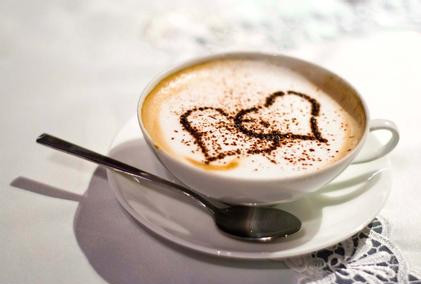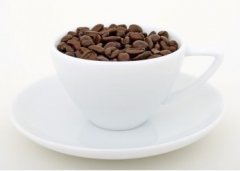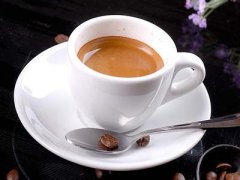26 styles of espresso-making skills-2

11. Ole Coffee
Cafe Ole!
(Mexico)
Slightly deep-cultivated coffee 75cc
Coffee liqueur 10cc
Tequila 10cc
Stir cream 20cc
One teaspoon of chocolate shavings
A cinnamon stick
Pour coffee liqueur and tequila into the cup and pour in the coffee. After stirring the cream float cover, sprinkle with chocolate crumbs. Finally, insert a cinnamon stick.
"Ole" is the cry of a bullfight. Although the English pronunciation of "Ole Coffee" is similar to the milky coffee introduced later, it is actually two completely different kinds of coffee.
12. Milk coffee
Cafe au Lait
(France)
Deep-baked coffee 200cc
Hot milk 150cc
Prepare two small pots, one for coffee and the other for milk. Serve it with a cup and a set of three pieces at the same time.
This is a typical French way of drinking, that is, instead of mixing in one container, coffee and milk are placed in separate pots. In the original sense of Milk Coffee, milk should be added to the coffee. Although it is rarely served in a pot and more in a cup of coffee, it is still consumed in the traditional way in old-fashioned cafes. In fact, in the past, in upper-class families, coffee had to be served in pots, so it can be said that this method is still used now.
13. Cocoa coffee
Cafe Cacao
(eastern European countries)
Deep-baked coffee 150cc
Cocoa liqueur 15cc
Stir cream 20cc
Pour coffee and cocoa liqueur into the cup, then float the stirred cream on top.
Cocoa liqueur is the most suitable liqueur for coffee, and coffee plus cocoa is the most common way to quote it in Europe. This kind of coffee can be both hot and cold, so it is especially favored by Eastern Europeans such as Hungary and Poland.
14. Italian liqueur coffee
Caffe Galliano
(Italy, USA)
Deep-baked coffee 100cc
Italian liqueur 20cc
Stir cream 20cc
Pour the Italian liqueur into the cup, pour in the coffee, and cover with stirred cream.
Italian liqueur is a typical sweet liqueur in Italy, which is very popular in Milan in northern Italy. It can be said that the citation of Italian liqueur mixed with coffee began in the second half of the 19th century, and the promotion of this method into a worldwide drink was attributed to Italian immigrants who emigrated to the United States. At the beginning of the 20th century, Italian liqueur coffee suddenly became a hot item in New York.
15. Rio de Janeiro coffee
Cafe Carioca
(Brazil)
Deep-baked coffee 100cc
15g sugar
Rum 15cc
Orange (cut) 1 canvas 4
Stir cream 20cc
A little orange powder
Put sugar, rum and orange slices in the cup and pour in the coffee. Cover it with whipped cream and sprinkle with orange powder (you can also use shaved orange peel instead)
Rio de Janeiro coffee is characterized by a blend of orange and cream, giving people a delicious enjoyment.
16. Kolo Coffee
Cafe Kahlua
(United States, Mexico)
Deep-bred coffee 150
Coffee liqueur (Mexican coffee liqueur) 20cc
White granulated sugar 10g
Stir cream 20cc
Put sugar in the cup, pour in the coffee wine, pour in the coffee, and gently cover the whipped cream (do not stir in the coffee).
Cold coffee is usually injected in Mexico, while hot coffee is injected in Europe and the United States.
17. Cardamom coffee ● Nordic flavor
Kaffee Cardamom Scandinavina
(Nordic countries)
Slightly deep-cultivated coffee 120cc
Cognac or other brandy 15cc
Sweet orange wine 10cc
5 cardamom
2 pieces of sugar cube
First, iron the glass, cognac and orange wine. Pour cognac and orange wine into the glass, add cardamom and sugar and light or (the room should be dark). After the alcohol is burned, the coffee is injected.
Characterized by a mellow taste of cardamom. The regular practice is to use a large pan to make a quantity of 4 or 5 people at the same time. This coffee is also known as "punch coffee of northern Europe".
Calvados Coffee
Cafe Calvados
(France)
Deep-baked coffee 75cc
Added Calvados 20cc
Put coffee in the cup and Calvados in the glass.
Calvados is actually brandy made from apples. If the Germans like to mix coffee with cherry brandy, the French (especially men) prefer to quote Calvados and coffee alternately. In Ingrid. Bergman and Charlie. In the LeMarc masterpiece "the Arc de Triomphe" co-starring Bowyer, there is a scene of drinking coffee, in which Calvados coffee is cited in the play. In bars in Paris, it is common to see people quoting Calvados coffee at the end of the day.
19. A can of coffee
Caffe Cannella
(United States)
Deep-baked coffee 200cc
1 cinnamon stick
Pour coffee into the cup and insert the cinnamon stick.
A can of coffee means to pour coffee into an empty can. Italians who emigrate to the United States often drink coffee in empty cans, which is, of course, a sign of a low standard of living. Later, after Italian immigrants migrated to the western United States, this way of citation was brought to the western border, from which a large cup with a handle was born, which is different from the birth process of beer mugs in public bars. Americans still retain the way of using cups instead of trays to serve coffee.
20. Cherry wine coffee
Kaffee Kirsch
(Germany, Austria)
Slightly deep-cultivated coffee 75cc
Cherry wine 20cc
Pour coffee in the cup and cherry wine in the small glass.
"Kirsch" means cherry in German. The official term should be "Kirschwasser", that is, cherry brandy. While drinking coffee, while drinking cherry wine, taste alternately, unique flavor. Although the wine is called cherry brandy, it actually belongs to liqueur.
Important Notice :
前街咖啡 FrontStreet Coffee has moved to new addredd:
FrontStreet Coffee Address: 315,Donghua East Road,GuangZhou
Tel:020 38364473
- Prev

26 types of fancy coffee-3
21. Golden Wanli Orange Brandy Coffee Cafe Grand Marnier (France, UK) deeply cultivated coffee 100cc Coffee Brandy Coffee 100cc Coffee C Jin Wanli orange brandy is an orange-flavored liqueur, which is generally used in coffee in France and England.
- Next

Espresso production skills 26 types of fancy coffee-1
1, Irish coffee Irish Coffee (Ireland) slightly deep-baked coffee 150cc Irish Whiskey 20cc white granulated sugar 10g stir cream or whipped cream 20cc ironing the cup, wipe the cup clean, put in the white granulated sugar, Irish Whiskey, pour into the coffee, and then gently float the cream on top (do not stir with a teaspoon when using whipped cream).
Related
- Beginners will see the "Coffee pull flower" guide!
- What is the difference between ice blog purified milk and ordinary milk coffee?
- Why is the Philippines the largest producer of crops in Liberia?
- For coffee extraction, should the fine powder be retained?
- How does extracted espresso fill pressed powder? How much strength does it take to press the powder?
- How to make jasmine cold extract coffee? Is the jasmine + latte good?
- Will this little toy really make the coffee taste better? How does Lily Drip affect coffee extraction?
- Will the action of slapping the filter cup also affect coffee extraction?
- What's the difference between powder-to-water ratio and powder-to-liquid ratio?
- What is the Ethiopian local species? What does it have to do with Heirloom native species?

